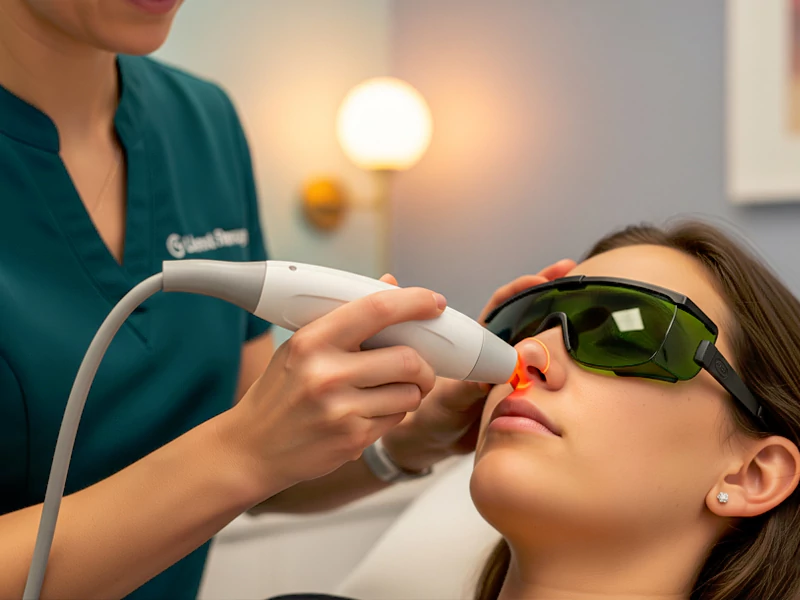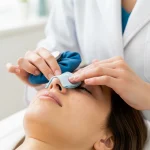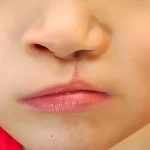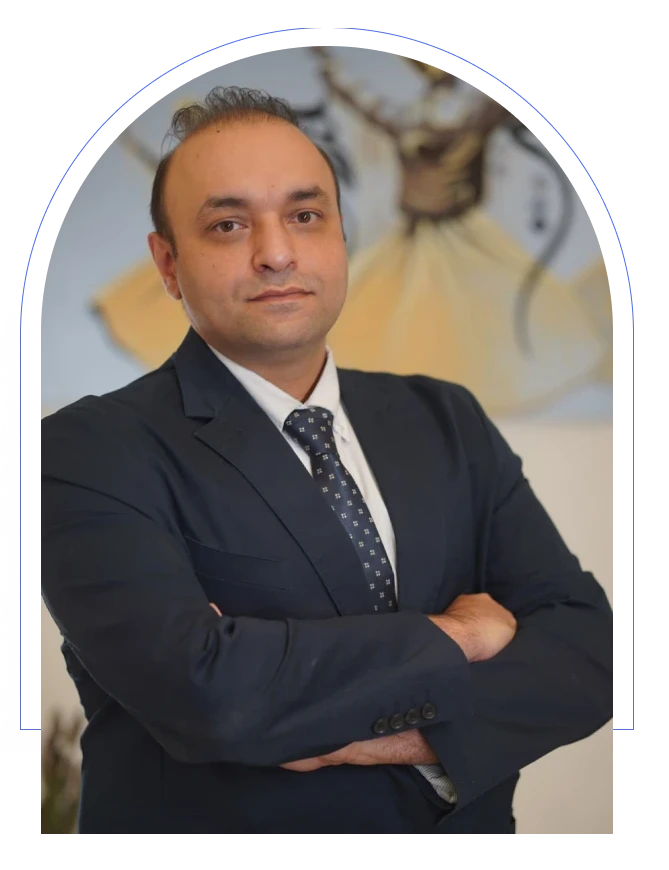Are you struggling with persistent, prolonged swelling after your rhinoplasty (nose job)? Do you feel your nose hasn’t quite settled into its final shape? This article is specifically for you! Swelling after a nose job is one of the most common—and often frustrating—side effects of rhinoplasty that can cause patient concern. But don’t worry; the good news is that there are highly effective, proven methods in the field of physical therapy that can help you significantly reduce post-rhinoplasty swelling and accelerate the healing process.
Why Does the Nose Swell After Rhinoplasty?
Swelling after a nose job is the body’s natural reaction to trauma and tissue manipulation during surgery. Understanding why this happens can help you manage your recovery more calmly and adhere to treatment plans. When the surgeon makes changes to the bone and cartilage structure of the nose, delicate blood and lymphatic vessels in that area are damaged. This damage leads to the accumulation of fluid (serum and lymph) in the intercellular space, which manifests as visible swelling.
Several factors influence the degree and duration of swelling, including:
- Surgical Complexity: The more extensive the changes, the greater the initial swelling.
- Skin Thickness: Thicker skin typically experiences more significant swelling and requires a longer time for it to subside, particularly around the nasal tip.
- Surgical Technique: Less invasive techniques may result in less swelling.
- Adherence to Aftercare: Ignoring the surgeon’s instructions can prolong and increase swelling.
- Genetics and Inflammatory Response: Every individual reacts differently, and some are naturally more prone to swelling.
Swelling is divided into two main phases: Primary (Acute) Swelling and Secondary (Chronic) Swelling). Primary swelling, which is usually more severe, peaks in the first week after surgery and then rapidly begins to decrease. However, secondary swelling, which is often subtle and sometimes imperceptible, can persist for up to a year or more, especially noticeable on the tip and bridge. This is where physical therapy techniques become instrumental in addressing this chronic swelling and helping your nose reveal its final contour sooner.
۸ Top Physical Therapy Techniques to Reduce Post-Rhinoplasty Swelling
The following physical therapy methods help improve blood and lymph circulation, reduce inflammation, and soften the tissues, significantly aiding in post-rhinoplasty swelling reduction.
۱. Cryotherapy (Cold Compress)

Using a cold compress is one of the first and most effective methods to control swelling immediately after surgery. Applying cold packs in the first 48 to 72 hours helps constrict blood vessels and reduces fluid leakage.
- How to Use: Use a cloth-covered ice pack or chilled gel packs. Place it gently on the cheeks and forehead, not directly on the nose/splint.
- Duration: Repeat for 15 to 20 minutes at a time, with 30 to 60-minute intervals. Avoid direct contact between ice and skin.
۲. Head Elevation
One of the simplest yet most crucial pieces of rhinoplasty recovery advice is head elevation.
- How to Do It: When sleeping or resting, use two or three pillows to keep your head elevated above the level of your heart. This position assists the natural drainage of fluids from the facial area, reducing fluid retention.
- Duration: Maintain this position for at least the first 1 to 2 weeks after surgery.
۳. Manual Lymphatic Drainage (MLD)
Manual Lymphatic Drainage is a specialized technique that helps drain excess fluids and toxins from the tissues. This method is particularly effective for chronic swelling after a nose job.
- How to Perform: MLD should be performed by a physiotherapist specializing in nasal physical therapy or a certified, trained physician. The movements are extremely gentle, rhythmic, and circular, stimulating the lymphatic pathways.
- Timing: MLD is typically started a few weeks after surgery, once much of the initial acute swelling has subsided and the surgeon gives approval.
- Benefits: Accelerates fluid absorption, improves circulation, reduces stiffness, and softens tissues.
۴. Specialized Nasal Massage

After the splint is removed (usually around the third week), targeted massage helps refine the shaping of the bone and cartilage and addresses residual swelling.
Three common techniques for specialized nasal massage include:
- Gentle circular massage on the nasal bridge.
- Mild vertical pressure from the root to the tip.
- Gently sweeping fluids toward the cheeks for lymphatic drainage.
- Daily Routine: Perform two to three 5–۱۰ minute sessions daily for six to eight weeks, only under the direction of your surgeon.
۵. Deep Diaphragmatic Breathing Exercises
Deep abdominal breathing exercises can indirectly help improve lymphatic flow and reduce chronic nose swelling after cosmetic surgery.
- How to Do It: Lie down or sit comfortably. Place one hand on your abdomen. Slowly inhale through your nose, filling your abdomen with air, and then gently exhale.
- Benefits: The diaphragm acts like a pump, assisting the movement of lymphatic fluid throughout the body, including the face.
۶. Therapeutic Ultrasound

Therapeutic Ultrasound is an advanced physical medicine technique used to reduce post-rhinoplasty swelling. It works by applying low-frequency sound waves (typically between 1 and 3 MHz) that penetrate the subcutaneous tissues. These pulsed waves have anti-inflammatory properties without generating significant heat. The main effect is accelerating the absorption of subcutaneous fluids and improving local blood flow, thereby expediting the healing process.
- Benefits: Reduces inflammation, alleviates pain, and helps damaged tissue return to its normal state faster.
- Application: Typically administered in short sessions (around 5 minutes) daily for a few days, performed under the supervision of a physical therapist to ensure appropriate dosage and intensity.
- Important Note: Ultrasound therapy is not suitable for individuals with metal implants in the facial area or active skin conditions. Consultation with a physician is necessary before starting treatment.
۷. Microcurrent Therapy
Microcurrent Therapy is a modern physical therapy method that uses extremely weak electrical currents (microamperes) to mimic the body’s natural nerve signals. This gentle stimulation activates the anti-inflammatory cycle in the targeted area, helping to reduce inflammation, pain, and congestion around the nose and sinuses, thus accelerating the resolution of post-rhinoplasty edema.
- Mechanism: The weak currents provide necessary energy to cells and improve circulation. This activates repair processes in damaged tissues, increasing the speed at which excess fluids are absorbed. It can also help improve skin firmness.
- Application: Portable devices are often available for home use. A common protocol involves applying the device to areas around the eyes and nose for 5 minutes, up to four times a day, for several weeks. Consistent use accelerates healing while reducing pain and discomfort.
۸. Low-Level Laser Therapy (LLLT)

Low-Level Laser Therapy (LLLT), also known as photobiomodulation, uses low-power red or near-infrared light to reduce inflammation and accelerate tissue repair. The effective wavelengths are typically between 660 and 940 nm, with an ideal energy dosage of 3 to 4 Joules per square centimeter. Treatment often involves 16 sessions over 8 weeks (2 to 3 sessions per week). This method is completely painless and non-thermal. It requires protective eyewear and the presence of a trained operator. LLLT effectively reduces swelling and bruising, contributing to a faster recovery after rhinoplasty.
When Should You Consult a Physical Therapist to Reduce Nasal Swelling?
The timing of consultation with a physical therapist is crucial to achieve the best results with minimal side effects after rhinoplasty.
- Start Gentle Therapy 48–۷۲ Hours Post-Surgery: In this initial period, acute swelling and inflammation are high. Gentle methods like cold compresses and initial manual lymphatic drainage (MLD) can be effective. This must strictly be performed with the approval and under the supervision of your surgeon to avoid tissue damage.
- Specialized Physical Therapy and Nasal Massage usually begin around the third week post-surgery. Once the external splint is removed and the nasal bones have gained some stability, the therapist can introduce specialized massage and more advanced techniques (like Ultrasound or Microcurrent) to reduce residual swelling and help define the final nasal shape.
- Follow-Up: Physical therapy sessions are typically scheduled regularly over several weeks. The program may include MLD, massage, ultrasound, or other physical modalities designed to reduce swelling, improve circulation, and speed up tissue repair.
In summary, the best time to start physical therapy after rhinoplasty is typically 2 to 3 days post-surgery for gentle methods and from the third week onwards for specialized massage and advanced techniques. This tailored timeline, guided by a specialist, significantly helps in effective swelling reduction and accelerates the recovery process.
Frequently Asked Questions (FAQ)
Cold compresses are generally recommended for the first 48 to 72 hours after rhinoplasty to help reduce swelling and inflammation. Continuing for too long after this period may potentially impede the natural healing process.
Yes, after receiving in-person or video instruction from a specialist. The movements must be extremely gentle and should never cause pain or pressure on the nose itself.
No. It should be avoided if you have metal implants in the facial area or active skin diseases. Always share your complete medical history with your physical therapist before starting treatment.




